A charge Q is kept at the corner of a cube. The electric flux passing through one of those faces not touching that charge is:
1.
2.
3.
4.
The electric field in a region is radially outward and at a point is given by (where r is the distance of the point from origin). Calculate the charge contained in a sphere of radius 20 cm centred at the origin.
1.
2.
3.
4. Zero
An isolated solid metal sphere of radius R is given an electric charge. Which of the graphs below best shows the way in which the electric field E varies with distance x from the centre of the sphere?
1. 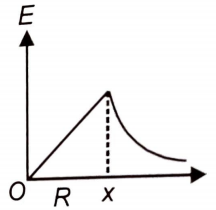
2. 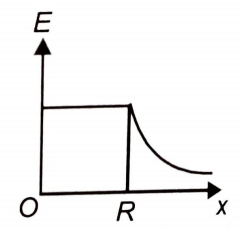
3. 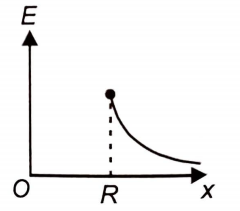
4. 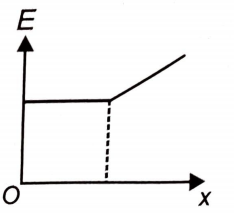
The electric field intensity at P and Q in the shown arrangement are in the ratio of:
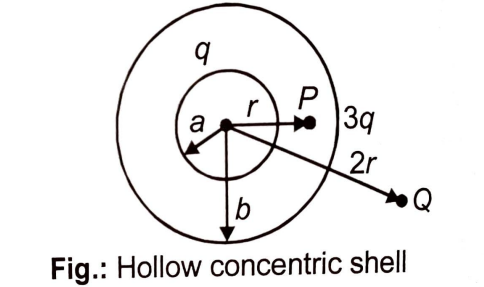
1. 1: 2
2. 2: 1
3. 1: 1
4. 4: 3
Consider an atom with atomic number Z as consisting of a positive point charge at the centre and surrounded by a distribution of negative charges uniformly distributed within a sphere of radius R. The electric field at a point inside the atom at a distance r from the centre is:
1.
2.
3.
4. Zero
An electron is rotating around an infinite positive linear charge in a circle of radius 0.1 m. If the linear charge density is 1 , then the velocity of the electron in m/s will be:
1.
2.
3.
4.
For two infinitely long charged parallel sheets, the electric field at P will be:
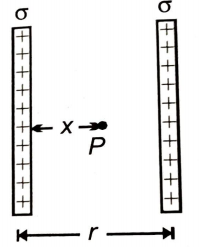
1.
2.
3.
4. Zero
When a test charge is brought in from infinity along the perpendicular bisector of an electric dipole, the work done is:
1. Positive
2. Zero
3. Negative
4. None of these
Two small spheres each carrying a charge q are placed at distance r apart. If one of the spheres is taken around the other in a circular path, the work done will be equal to:
1. Force between them r
2.
3. Force between them
4. Zero
Work done in moving a charge q coulomb on the surface of a given charged conductor of potential V is:
1. joule
2. joule
3. joule
4. Zero






